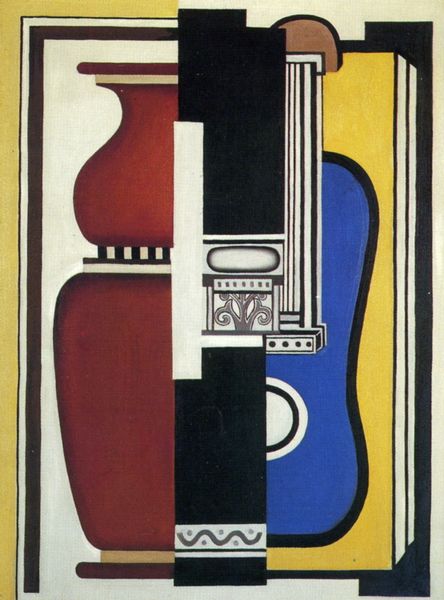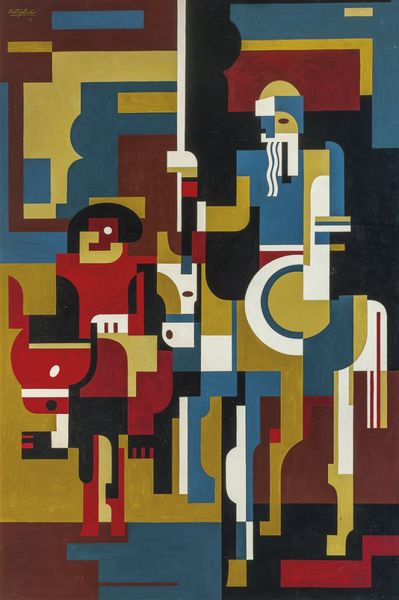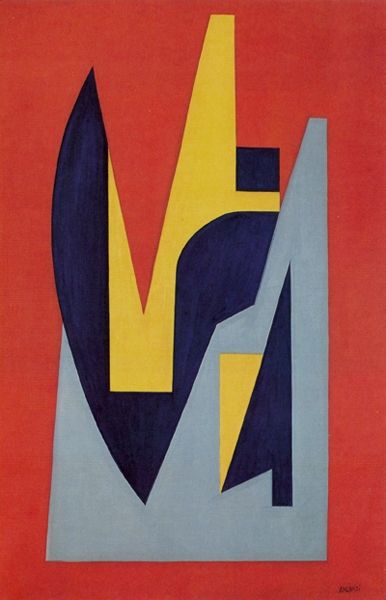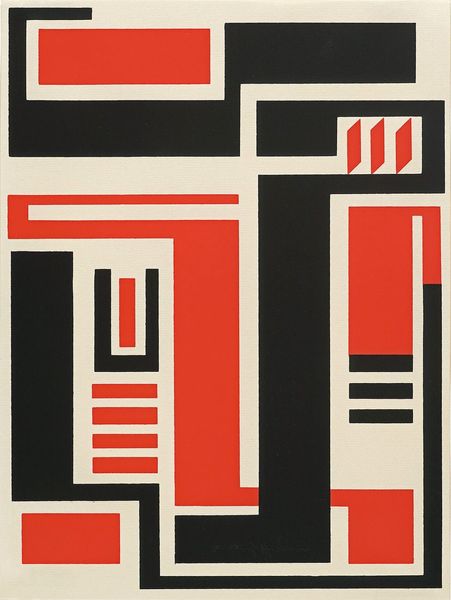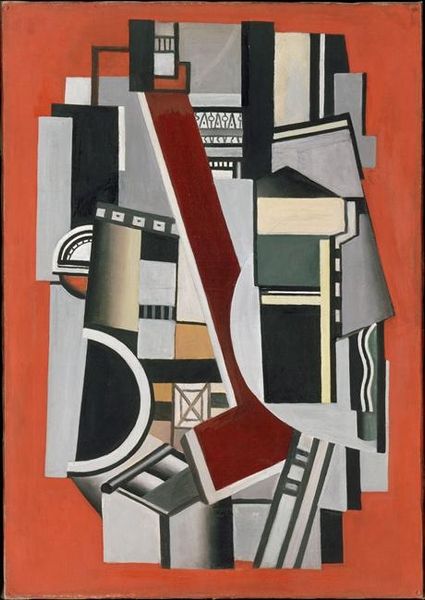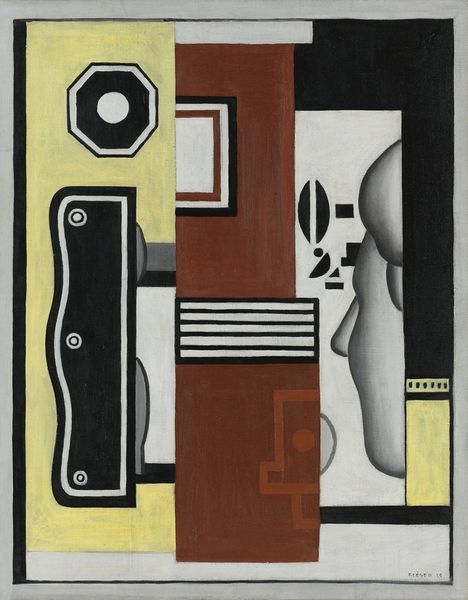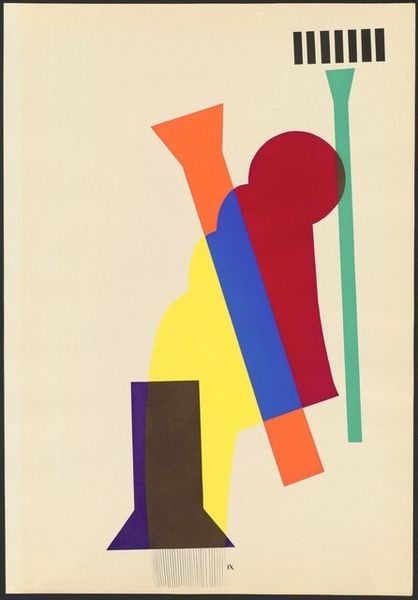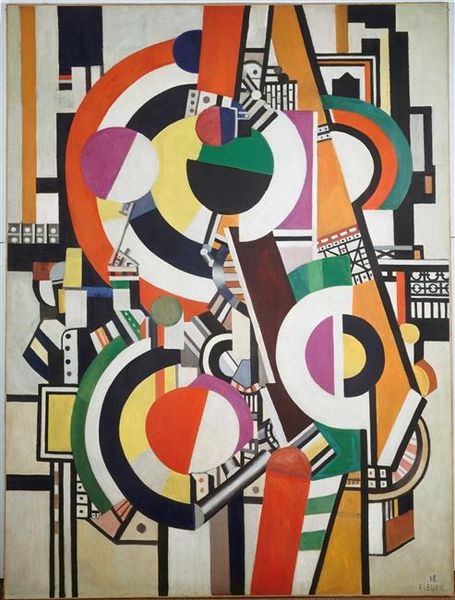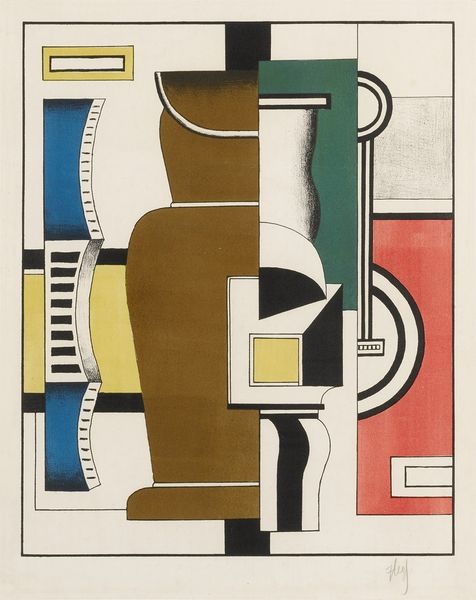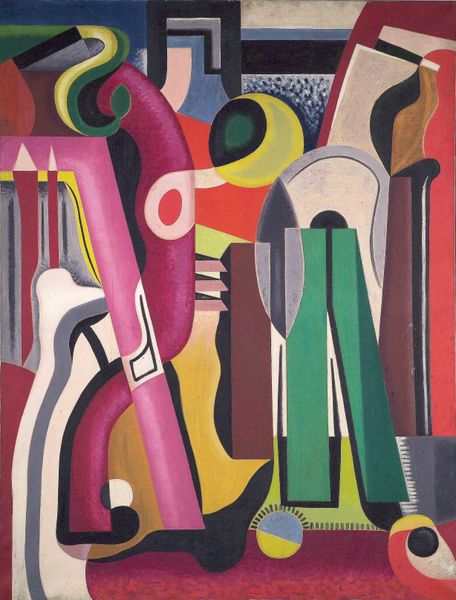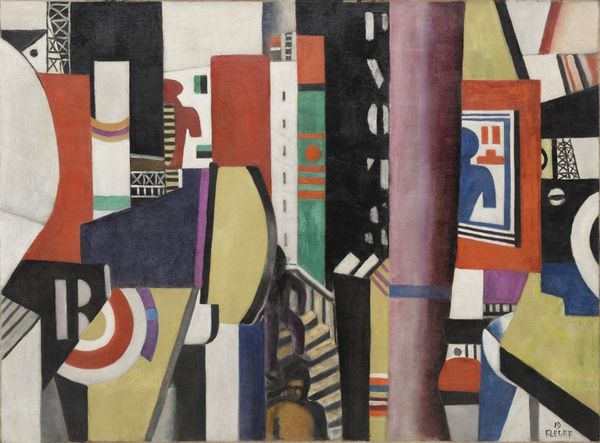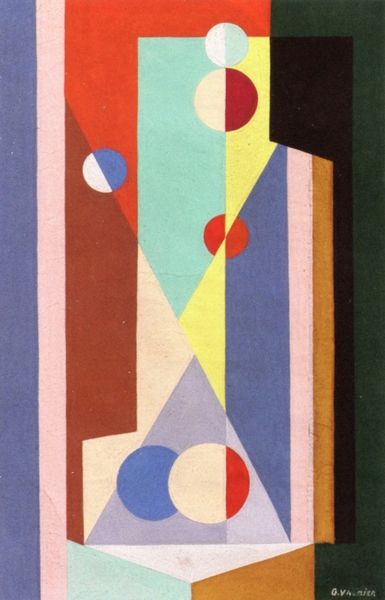
painting, oil-paint
#
cubism
#
abstract painting
#
painting
#
oil-paint
#
geometric
#
abstraction
#
modernism
Copyright: Fernand Leger,Fair Use
Curator: Fernand Léger’s "Accordion," created in 1926 using oil paint, is a compelling example of Cubist influence rendered with an eye for bold geometric forms. It makes you stop and try to decode something both musical and mechanical, right? Editor: Absolutely. It strikes me as an organized riot. All these flat, clashing colours held together, almost screaming, and yet…controlled. Does that even make sense? Like joyful noise distilled through machine precision. Curator: It makes perfect sense. Léger aimed to capture the energy of modern life by depicting recognizable objects and figures in simplified, almost mechanized forms. Look at how the accordion becomes a series of rectangles, cylinders, and bold lines. Do you see how it speaks to the machine age? Editor: I do! But those bright colours—the assertive reds, oranges, that defiant blue outline. Those inject a warmth, a very human feeling into what could’ve easily become cold and impersonal. It is as if Léger were saying humanity and technology aren't at odds, but can find harmony. I feel this rhythm running through me. A strange mix between the mechanical and a vibrant heartbeat. Curator: Precisely. Léger found inspiration in everyday life, in the dynamism of the modern city, but always filtered through his very specific artistic vision. He thought that everyday objects have intrinsic value as subjects of paintings. To show how even an average working-class object as the accordion holds something great within. He transforms this instrument, a humble object, into a powerful symbol of modernism. Editor: So much of Cubism, to me, always feels like puzzle solving, or visual riddles, but here there's this unexpected accessibility, something primal. Perhaps its about breaking apart reality only to build something richer and more visceral. The accordion ceases to be just an instrument; its a raw energetic idea of how humans can interact with sound itself. What an idea... Curator: Well said. Léger wanted art to be democratic, to connect with ordinary people. Perhaps, then, it is about elevating common sights through design to be powerful vehicles for expression and universal meaning. Editor: It resonates, it truly does. Thank you for shining that light on it for me! Curator: The pleasure was all mine. Hopefully the music is audible for those willing to listen and imagine what such an orchestra of forms might perform.
Comments
No comments
Be the first to comment and join the conversation on the ultimate creative platform.

